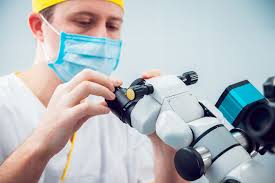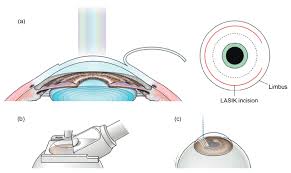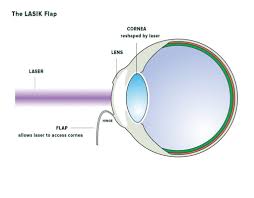Table of Contents
ToggleAutologous serum eye drops (ASEDs) have emerged as an effective treatment for managing severe dry eye, particularly after undergoing LASIK surgery.
Their composition, derived from a patient’s own blood, closely mimics natural tears, making them a potent solution for post-surgical dryness.
LASIK surgery is a life-changing procedure that corrects vision issues like myopia, hyperopia, and astigmatism. Yet, despite its benefits, some patients experience a common side effect—dry eye syndrome. While mild to moderate dry eye can often be managed with artificial tears, severe cases require more specialised treatment. This is where autologous serum eye drops step in.

What Are Autologous Serum Eye Drops?
Autologous serum eye drops are a biologic treatment crafted from a patient’s blood. After blood is drawn, it undergoes processing to separate the serum (a component of blood without red and white cells) from other elements. This serum is then mixed with saline to produce customised eye drops, which are unique to each individual.
Why are ASEDs effective?
Their composition is strikingly similar to natural tears. Serum contains growth factors, vitamins, and essential nutrients like albumin and transforming growth factors that promote healing, reduce inflammation, and improve eye surface health.
For post-LASIK patients, who often grapple with disrupted tear production and corneal nerve sensitivity, this biochemical similarity makes ASEDs a powerful therapeutic option.
Why Does Dry Eye Occur After LASIK?
Understanding the cause of dry eye post-LASIK is crucial to appreciating the value of ASEDs. LASIK surgery involves the reshaping of the cornea to improve and correct vision. However, this process can temporarily disrupt the corneal nerves responsible for stimulating tear production. Such disruptions can lead to:
- Reduced Tear Secretion: With nerve signals delayed or impaired, the eye struggles to maintain hydration through natural tear production.
- Tear Film Instability: The surgical reshaping can alter the cornea’s surface, which affects how evenly tears spread across the eye.
- Inflammation and Damage to Tear Glands: Some patients experience irritation that further exacerbates dryness and discomfort.
While most patients see an improvement within weeks or months post-surgery, some endure prolonged symptoms, impacting their quality of life.
Benefits of Autologous Serum Eye Drops for Post-LASIK Dry Eye
Autologous serum eye drops are gaining widespread recognition for their effectiveness in managing persistent symptoms of dry eye syndrome after LASIK. Here’s why:
1. Promotes Natural Healing
ASEDs contain growth factors such as epidermal growth factor (EGF) and nerve growth factor (NGF), which accelerate the repair of damaged corneal epithelial cells and encourage nerve regeneration. This healing process is vital for post-LASIK patients dealing with corneal sensitivity.
2. Reduces Inflammation
One of the primary causes of post-LASIK dry eye is inflammation, which can damage tear-secreting glands and exacerbate dryness. Serum components like anti-inflammatory cytokines help to calm inflammation and restore balance to the ocular surface.
3. Improved Tear Film Quality
ASEDs aren’t just a substitute for natural tears—they help to stabilise the tear film. The blend of proteins, enzymes, and natural lipids in the serum improves hydration and lubrication, reducing tear evaporation.
4. Customised to Your Needs
Because ASEDs are made from the patient’s own blood, they are bio-compatible and free from preservatives or additives. This reduces the risk of allergic reactions or sensitivities, making them a safer alternative to artificial drops for long-term use.
5. Offers Comfort Where Artificial Tears Do Not
While artificial drops help in mild dry eye cases, they often fail to provide relief for patients with moderate to severe symptoms. Serum’s unique nutrient-rich properties fill this gap, reducing symptoms like burning, redness, and foreign-body sensation.
How Do Autologous Serum Eye Drops Work?
The mechanism behind these drops is rooted in their biocompatibility. When applied directly into your eyes, they:
- Enhance Cellular Repair: The epithelial cells on the corneal surface absorb nourishing proteins from the serum, which support tissue repair and nerve regeneration.
- Restore Tear Production: By calming inflammation and promoting balanced tear secretion, serum helps boost the eye’s ability to self-lubricate over time.
- Reduce Oxidative Stress: The vitamin and antioxidant content counters oxidative damage, a factor that can worsen dryness.
Creating ASEDs for Post-LASIK Treatment
The production of autologous serum eye drops is highly controlled and tailored to ensure safety and efficacy. Here’s a step-by-step overview of the process:
- A small volume of blood is collected from the patient—typically 20-60ml.
- The blood is processed in a laboratory to separate the serum from the cellular components using centrifugation.
- The serum is diluted with sterile saline or balanced salt solution at a concentration recommended by an ophthalmologist (often 20% or 50%).
- The final product is bottled into vials and usually refrigerated until use. Because the drops lack preservatives, their shelf life is limited to weeks or months, depending on storage conditions.
Your eye care provider carefully oversees this process to ensure sterility and proper formulation.
How to Use Autologous Serum Eye Drops Safely?
Proper usage is essential to ensure optimal results. Here are some tips:
- Follow Dosage Instructions: Depending on the severity, your doctor may recommend using the drops up to six times daily.
- Store Correctly: Keep ASEDs refrigerated to maintain their potency and sterility. However, do not freeze them unless instructed, as this can alter the serum’s properties.
- Use Hygienically: Avoid touching the dropper bottle to your eye or any surface. This prevents contamination.
- Watch for Side Effects: Although rare, some patients may experience slight irritation or redness. Inform your doctor if symptoms persist.
Are There Risks or Limitations?
While autologous serum eye drops are generally safe, it’s important to understand certain limitations before starting treatment:
- Short Shelf Life: ASEDs are usually viable for a few weeks, meaning patients must frequently reorder or store frozen vials as backups.
- Availability: Due to the specialised process required for preparation, ASEDs may not be available at all medical facilities.
- Cost: Because insurance coverage varies, the expense of ASEDs can sometimes deter patients. However, many users attest that the benefits far outweigh the costs.
- Not Instant Relief: While incredibly effective, ASEDs may require consistent use for weeks to show significant improvement.
Should You Consider Autologous Serum Eye Drops?
If you’re struggling with persistent dry eye after LASIK surgery, autologous serum eye drops may provide the relief you’ve been searching for. They cater specifically to your body’s needs, delivering personalised healing that artificial treatments often can’t.
Always consult with an experienced ophthalmologist to discuss whether this treatment is right for you.
Final Thoughts on Autologous Serum Eye Drops for Dry Eye After LASIK
Dry eye syndrome can cast a shadow on the life-changing improvements LASIK offers. But with autologous serum eye drops, many patients find long-lasting relief, improved vision comfort, and restored quality of life.
Don’t just endure LASIK-related dry eye—treat it effectively. Take the step towards better ocular health and consult your specialist about autologous serum eye drops today!













